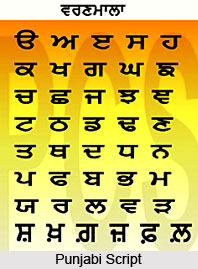 Whenever the image of North India comes to be recalled, the region is largely designated with the sublime, cloudy and foggy atmosphere of the misty and sky-high Himalayan Mountains. The raw loveliness of green and more green hidden within the North-Indian forests also have in store the yet to be scouted species of animals roaming in the lurk. However, besides associations of mountains and its forests, north India also is wholly juxtaposed by its sheer coiffe of cosmopolitan cities, its plannings, skyscrapers or glistening infrastructure. As such, this very region of north India redefines the definition of amalgamated dwelling of silence with hustle and laid-back with forever busyness. This very elementary aspect becomes even more manifest when the Indian population is talked about. North India delineates the states comprising Jammu and Kashmir, Himachal Pradesh, Punjab, Uttarakhand, Uttar Pradesh, Haryana and the Union Territories of New Delhi and Chandigarh. With such assorted kinds of names residing side by side, it becomes obvious that its language and speech diversity turns even more complex and meticulous. For instance, the Pahari language spoken by men from Uttarakhand will never be recognised by an individual residing in Chandigarh, speaking Punjabi. This precise diversification and wholesomeness is describes through the north Indian languages.
Whenever the image of North India comes to be recalled, the region is largely designated with the sublime, cloudy and foggy atmosphere of the misty and sky-high Himalayan Mountains. The raw loveliness of green and more green hidden within the North-Indian forests also have in store the yet to be scouted species of animals roaming in the lurk. However, besides associations of mountains and its forests, north India also is wholly juxtaposed by its sheer coiffe of cosmopolitan cities, its plannings, skyscrapers or glistening infrastructure. As such, this very region of north India redefines the definition of amalgamated dwelling of silence with hustle and laid-back with forever busyness. This very elementary aspect becomes even more manifest when the Indian population is talked about. North India delineates the states comprising Jammu and Kashmir, Himachal Pradesh, Punjab, Uttarakhand, Uttar Pradesh, Haryana and the Union Territories of New Delhi and Chandigarh. With such assorted kinds of names residing side by side, it becomes obvious that its language and speech diversity turns even more complex and meticulous. For instance, the Pahari language spoken by men from Uttarakhand will never be recognised by an individual residing in Chandigarh, speaking Punjabi. This precise diversification and wholesomeness is describes through the north Indian languages.
When stating about the historical evolvement of the north Indian languages, there however survives no judgement of opinion concerning a stipulated time when the modern north Indian languages such as umpteen western and eastern Hindi dialects, Punjabi, Sindhi, Pahari and Kashmiri languages and Hindustani, emerged. Nevertheless, A.D. 1000 is commonly accepted as the precise epoch of north Indian languages beginning its prolonged journey towards evolution.
North India and its languages are absolutely clustered under the family of Indo-Aryan languages, which wins total predominance. A major section of Northern India forms the so-termed `Hindi Heartland` (a common reference to the regions of North and Central India where Hindi languages are spoken natively or as a primary language), where Hindi and related languages override its other counterparts. Preceding the Partition of India, this Heartland also had encompassed the Pakistani provinces of Sindh and Punjab, and the eastern portion of the North West Frontier Province (NWFP) up to Peshawar Valley, where Punjabi accents and Hindko are spoken. This in effect debars numerous of the seven North-East states (leaving out Assam and Sikkim).
When spoken in terms of linguistics too, Northern India is dominated by Indo-Aryan languages (however no such firm grounds survive to support a factual existence of Aryan race within India). Although sub-regions of Dravidian languages (such as Bihar`s Kurukh language), Tibeto-Burman languages (such as Himachal`s Lahauli language) and Austro-Asiatic languages (such as Munda) continue to remain spanning the region. It is precisely in this region, or its immediacy, that Sanskrit and the several Prakrits are thought to have evolved. Indo-Aryan languages native to Northern India assimilate the Hindustani lingua franca (including both its Hindi and Urdu versions), an extensive range of western and eastern Hindi dialects, Bihari languages (Bhojpuri, Magadhi and Maithili), Punjabi, Pahari languages, Kashmiri and various other aboriginal instances. The Hindi-speaking sub-region is at times referred to as the Hindi Heartland or the `Hindi Belt` and is defined in a slack.



















